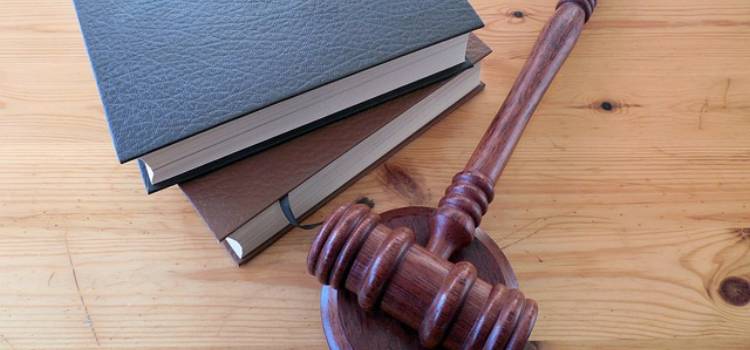Revisiting the Identification, Disclosure, and Production of Historical Documents

The need for sellers to provide buyers with historical documents is a subject I have covered in previous articles. The last time I did so was December 2021. As noted therein, historical documents include all documents that precede the sale of the property. They include documents in the seller’s possession, custody, and control, as well as those maintained by other sources such as governmental entities, real estate brokers, contractors, etc. With respect to documents that are in the possession, custody, and control of the seller, one way to categorize these historical documents is as follows: (1) documents received during the purchase of the property; (2) documents received and maintained during the seller’s ownership, including those relating to the improvement, renovation, alteration, repair, and/or maintenance of the property; and (3) those related to the listing, marketing, and sale of the property.
Both the PRDS Supplemental Seller’s Checklist (“SSC”) and the C.A.R. Seller Property Questionnaire (“SPQ”) require that a seller disclose if they are aware of historical documents and provide a copy of those documents to the buyers if they are in the seller’s possession. These questions can be found in multiple sections in the SSC (Part II A, B; Part III A, B, C, D, and E; Part IV D; Part V A(3), B, C(1)(2)(3), D, E, F, G, etc.). They are found in one location in the SPQ (¶ 5).
In December 2021, C.A.R. revised its SPQ. One change was to move the question regarding historical documents from ¶ 17A on the last page under the section “Other” and move it to the first page of the form in ¶ 5 with the title of “Documents.” For a further discussion of the revisions to the SPQ, see my article from December 2021.
Before this revision, many sellers answered question 17A in the negative, and there were few, if any, historical documents provided in response to that question. Given the scope of the question, it may be that the lack of an affirmative response to this question was due to its placement on the last page in the last section of the SPQ, and some sellers may have seen the title “Other” and assumed the question was either not particularly important or was duplicative of questions already answered.
Many years ago, PRDS had a similar question at the end of its SSC; the PRDS Forms Committee moved it to the beginning of the SSC and created separate questions that requested information and the production of historical documents on different subjects. One of the reasons for doing so was the potential impact that historical documents have on disputes amongst buyers, sellers, and real estate licensees, including those related to disclosure and contract cancellation disputes.
I had hoped that since C.A.R. had moved the question regarding historical documents to page 1 of the SPQ and changing the title to “Documents,” these modifications would assist sellers in responding to that question in the affirmative and would cause sellers to produce the historical documents in their possession. Unfortunately, my expectations have not been met.
Over the last four months, I have reviewed numerous SSCs and SPQs in the context of disclosure and contract termination disputes. Based on my review, as well as on discussions with real estate colleagues, sellers are still struggling with understanding the scope of ¶ 5 of the SPQ and therefore are having some difficulty answering it appropriately, let alone providing all of the required documents to buyers. This is in sharp contrast to those sellers responding to questions regarding historical documents in the SSC – a form that repeatedly prompts sellers to retrieve and provide all possible historical documentation.
If a seller responding to question 5 in the SPQ answers it in the affirmative, the majority of the responses state “home inspection, termite inspection, roof inspection.” This response typically refers to the reports the seller has obtained in conjunction with listing the property. What this response fails to address, however, is the scope of historical documents that are otherwise requested in question 5.
Question 5 of the SPQ states
Reports, inspections, disclosures, warranties, maintenance recommendations, estimates, studies, surveys or other documents (whether prepared in the past or present, including any previous transaction), pertaining to (i) the condition or repair of the Property or any improvement on this Property in the past, now or proposed; or (ii) easements, encroachments or boundary disputes affecting the Property whether oral or in writing and whether or not provided to the Seller………… □ Yes □ No
Note: If yes, provide any such documents in your possession to Buyer.
Explanation:______________________________________
What sellers are apparently failing to appreciate is the breadth of the type of documents that must be provided. The question is clearly not limited to the documents obtained in listing the property for sale but includes ANY AND ALL documents relating to (1) the seller’s acquisition of the property; (2) the seller’s repair, maintenance, alteration, renovation, and/or improvement of the property; (3) the condition of the property; and/or (4) any easement, encroachment, or boundary dispute affecting the property. All documents concerning these issues are included within the scope of question 5, and these documents need to be provided to the buyer if they are in the seller’s possession.
Examples of documents that should be provided by sellers to buyers include but are not limited to the following: (1) inspection reports obtained when the property was purchased, whether provided by the prior owner or ordered as part of the purchasing process; (2) disclosures made by anyone (including any TDS, SSC, SPQ, AVID etc.) received during the purchase of the property; (3) reports, proposals, bids, etc. relating to the condition of the property or any repair, maintenance, alteration, renovation, and/or improvement of the property during the seller’s ownership; (4) written communications between the seller and any individual or entity (e.g., contractors, architects, engineers, inspectors, neighbors, government agencies, etc.); and (5) any plans or drawings relating to any of the foregoing subjects. The scope of question 5 includes documents pertaining to not only the main structure and the land but also to any other improvements on the property, including those documents that relate to any of these subjects, issues, and/or conditions that existed in the past, that exist currently, or that were proposed but not yet completed.
Why do so many sellers fail to appreciate the scope of question 5? From my perspective, a large part of the problem is the way the question is structured. As with many other questions in the SPQ, question 5 includes multiple types of documents, subjects, issues, and timeframes that are all lumped together. Framing the question this way achieves one objective (brevity), but, in my opinion, C.A.R. does so by sacrificing much-needed clarity; the SPQ fails to aid sellers in understanding their need to provide all relevant documents that contain material facts regardless of when sellers obtained that documentation. The result of a poorly structured questionnaire is that sellers simply do not understand the actual scope of question 5, and thus they provide very little documentation to the buyers. The failure to provide all historical documents can lead to potential liability for the sellers.
Given the potential significance that historical documents can have in disputes between buyers, sellers, and real estate licensees, my suggestion is that sellers who are requested to fill out an SPQ should be strongly encouraged to take sufficient time to read and fully understand the scope of all of the questions (including question 5) and provide full and complete responses to all questions. A good practice, one of which is mentioned in the industry advisories regarding filling out disclosures, is for a seller to retrieve any historical documents and/or “house files” before starting to fill out the TDS, SSC, SPQ, and other disclosure documents. This excellent advice not only enables sellers to refresh their memories as to what they have known about the property (so that they can more truthfully answer questions about their “awareness”) but also serves as a guide to what documents need to be provided to buyers.
A seller’s failure to fully provide all of the relevant documents and material facts to buyers frequently enables buyers to cancel contracts (and get their deposit returned) and, if escrow closes, can lead to sellers paying significant amounts in damages. The bottom line: a seller’s ease in completing a disclosure form should never be seen as more important than enabling sellers to better understand how critical it is to the seller’s best interests (and long-term financial security) to provide all of their historical documents.
About David Hammerslough
In his 40 years of practice, Dave Hamerslough has litigated and arbitrated residential and commercial real estate disputes on behalf of brokers and agents, buyers and sellers, and landlords and tenants. He teaches courses and writes articles on these subjects for brokers, agents, attorneys, and consumers. Dave also acts as mediator and arbitrator of real estate disputes. He is admitted to practice in all California courts.
About HomeGuard Incorporated – Home Inspections from Sacramento to San Diego
HomeGuard Incorporated provides home inspections, roof inspections, termite inspections, sewer lateral inspections, and pool/spa inspections as well as Natural Hazard Disclosure reports for realtors, home buyers and sellers, as well as homeowners who want to learn about and plan for future home maintenance. Contact us today to schedule an inspection or request a natural hazard disclosure report.




